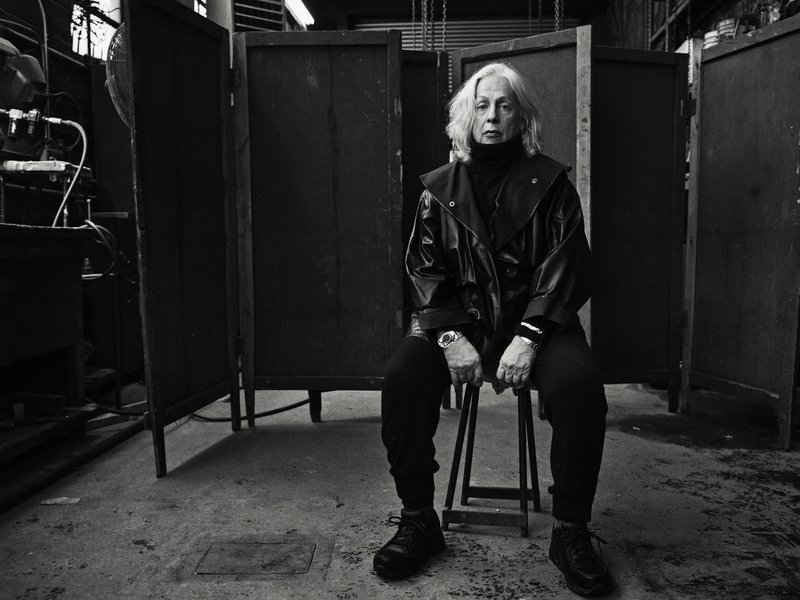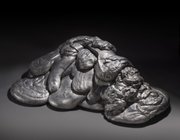In viewing any of artist Lynda Benglis' sculpture or painting work, the influences of growing up along the shores of Lake Charles in Louisiana, of crawfish digging in the mud or of the dichotomy of her religious upbringing split between Protestantism and Greek Orthodox may be opaque. But these are just a few pieces of her past that came to shape -- literally and figuratively -- the work Benglis produces and the answers she seeks in her art.
"I think I chose abstraction because for me that was a better way of emoting and thinking about feelings. But they are specific feelings," Benglis shares. Her recollections of the buoyant feeling of being suspended in water, of children playing in waist-deep mud, of how the lake's flooding affected her daily routine, and even of how the opposing sides of her heritage responded to imagery led to Benglis' experimentation with painting and sculpture, form and color.
FAQ
Distinguished Speaker Series:
Lynda Benglis
WHEN — 7 p.m. Nov. 3
WHERE — Crystal Bridges Museum in Bentonville
COST — $5-$10
INFO — 657-2335, crystalbridges.org
"I realized that a lot of my sculptures, because they were curved and because they were floating in a sense, that this also maybe drew back into my own biological history so to speak -- being some embryonic thing that gets born later. I think we all have experienced that and the memory is there, but we don't always consciously associate that. All of that was part of my experience in the liquid forms I began to experiment with."
Participating in the Distinguished Speaker Series at Crystal Bridges Museum of American Art in Bentonville, Benglis anticipates sharing some of her "stream of consciousness" with the audience on Nov. 3 around the context of her experimentation with different materials. Gaining recognition in the late 1960s for her poured sculptures, Benglis' pieces often allow the natural flow of the materials to inform the shape and the meaning. Through both idea-driven and media-driven processes, Benglis offers that she invented new ways of thinking about sculpture and painting.
"It's not always apparent what the artist is doing. In my case, I am very involved with different kinds of materials and alluding to the figure in different ways," she explains. "I was doing pigmented latex rubber and then later moved into a semi-flexible urethane all because I wanted to go bigger -- I wanted to have the material rise up and face me. I wanted to go into the corner to make a pile so the painting itself could face me, look back at me. Because that was an expression a lot of artists used: 'The painting should look back at you. The sculpture should look back at you.' So the scale, I was really playing with in that sense."
Benglis' work also disrupted the boys' club that was the art world at the time, and their minimalist trends in form and color. Her exploration of the form, gender identity and sexuality in art throughout her career, as well as her contributions to the feminist movement and dialogue of the time render Benglis an inspiring figure beyond the artistic community.
"It is interesting, isn't it, that women continue to gain energy and momentum about civil rights," Benglis muses. "I think it's something symbolical that [happens] because of the very nature of our dual nature -- that we have both a home-management role, and we have also our conditioned idea of motherhood and our conditioned idea of the working woman.
"I think because we always are faced with a choice at different times in our lives, it will always be significant as to which wave we're going to ride," she goes on. "So things change, but things don't change rapidly. Certainly there's more emphasis on all the genders and finally we know that taste cannot be measured, we cannot measure genders or gender relationships so easily. The psychology is quite complicated."
And as all these elements come together to inform Benglis' work -- from the crawfish eyes peeping out of the mud, to the ideas surrounding gender roles -- the interpretation from the viewer can be quite complicated. Benglis' sculpture "Eat Meat" is part of the permanent collection at Crystal Bridges and has come to be known as one of the museum's most challenging pieces. In considering the artist's life experiences, perhaps guests can approach the work with a fresh understanding.
After all, Benglis offers, "art is a conversation about events and ways of experiencing."
NAN What's Up on 10/27/2017


